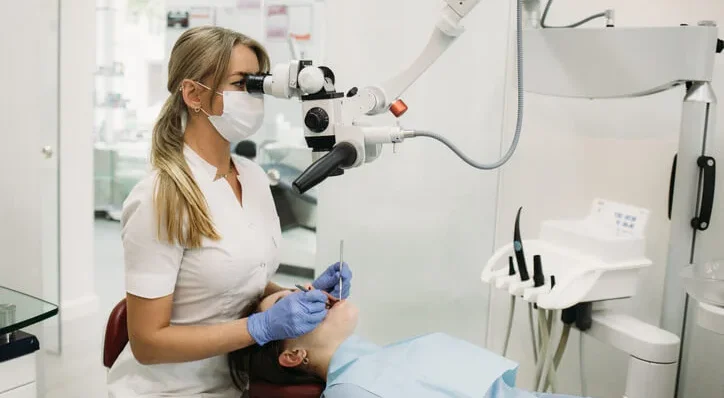Dental treatments encompass a wide array of procedures, ranging from routine cleanings to complex surgeries. Regardless of the nature of the treatment, one factor remains constant: the importance of good visibility. In dentistry, visibility refers to the ability of the dentist to clearly see the area being worked on, including teeth, gums, and surrounding tissues. This visibility is achieved through proper lighting, appropriate instrumentation, and, in many cases, magnification devices such as loupes or microscopes. In this article, we will explore why good visibility is paramount in dental treatments, its impact on patient care, and how advancements in technology have revolutionized the field.
Table of Contents
ToggleImportance of Good Visibility
- Enhanced Precision and Accuracy
- Improved Diagnosis
- Efficient Workflow
- Enhanced Ergonomics
- Patient Comfort and Satisfaction
Enhanced Precision and Accuracy
One of the primary reasons why good visibility is crucial in dental treatments is its direct correlation with precision and accuracy. Dentistry often involves intricate procedures that require meticulous attention to detail. Whether it’s filling a cavity, performing a root canal, or placing dental implants, even the slightest deviation can have significant consequences for the patient’s oral health. With proper visibility, dentists can ensure that every step of the procedure is executed with precision, minimizing the risk of errors and complications.
Improved Diagnosis
Clear visibility is also essential for accurate diagnosis in dentistry. When examining a patient’s oral cavity, dentists rely on visual cues to identify signs of tooth decay, gum disease, oral lesions, and other dental issues. Without adequate visibility, these abnormalities may go unnoticed, leading to delayed diagnosis and treatment. By ensuring optimal visibility, dentists can thoroughly assess the patient’s oral health status, enabling them to formulate an appropriate treatment plan tailored to the individual’s needs.
Efficient Workflow
Good visibility plays a significant role in enhancing the efficiency of dental procedures. When dentists can clearly visualize the area of interest, they can work more efficiently, reducing the time required to complete treatments. This not only benefits the dentist but also improves the patient’s experience by minimizing chair time and discomfort. In today’s fast-paced world, efficiency is key to delivering timely and effective dental care, and good visibility is a fundamental component of an efficient workflow.
Enhanced Ergonomics
In addition to its impact on patient care, good visibility also contributes to the overall ergonomics of dental practice. Dentistry is physically demanding work, often requiring dentists to maintain awkward positions for extended periods. Poor visibility can exacerbate ergonomic challenges, forcing dentists to strain their eyes and neck to see the treatment area adequately. This can lead to discomfort, fatigue, and even musculoskeletal injuries over time. By ensuring optimal visibility, dentists can adopt more ergonomic working positions, reducing the risk of occupational injuries and improving their long-term well-being.
Patient Comfort and Satisfaction
From the patient’s perspective, good visibility is essential for ensuring a comfortable and satisfactory dental experience. Patients are more likely to feel at ease when they can see that their dentist has a clear view of their teeth and gums. This instills confidence and trust in the dentist’s abilities, fostering a positive rapport between the patient and the dental team. Furthermore, treatments performed with good visibility are often associated with better outcomes and reduced postoperative complications, further enhancing patient satisfaction.
Technological Advancements in Visibility
Advancements in technology have revolutionized the field of dentistry, particularly concerning visibility during dental treatments. Modern dental clinics are equipped with state-of-the-art lighting systems that provide uniform illumination of the oral cavity, ensuring optimal visibility in all areas. Additionally, many dentists now use magnification devices such as loupes or surgical microscopes to enhance visibility further. These devices magnify the treatment area, allowing dentists to see even the tiniest details with exceptional clarity.
Furthermore, digital imaging technologies such as intraoral cameras and cone beam computed tomography (CBCT) scanners enable dentists to capture high-resolution images of the patient’s oral structures. These images not only aid in diagnosis and treatment planning but also serve as valuable educational tools for patients, allowing them to better understand their oral health conditions and treatment options.
The Future of Visibility in Dentistry
As technology continues to advance, the future of visibility in dentistry looks promising. Emerging technologies such as augmented reality (AR) and virtual reality (VR) have the potential to revolutionize how dentists visualize and interact with the patient’s oral anatomy. AR overlays digital information onto the real-world environment, providing dentists with real-time guidance and enhanced visualization during procedures. VR, on the other hand, immerses dentists in a virtual environment where they can simulate dental treatments and practice surgical techniques in a risk-free setting.
Additionally, advancements in materials science and engineering are leading to the development of innovative dental instruments and devices designed to improve visibility and ergonomics further. From ergonomic handpieces to intraoral scanners, these technologies are poised to enhance the precision, efficiency, and overall quality of dental care.
Conclusion
In conclusion, good visibility is essential for delivering high-quality dental treatments and ensuring positive outcomes for patients. By providing dentists with a clear view of the treatment area, visibility enhances precision, accuracy, and diagnostic capabilities while improving workflow efficiency and ergonomics. Technological advancements continue to play a crucial role in enhancing visibility in dentistry, paving the way for innovative approaches to diagnosis, treatment, and patient care. As we look to the future, the integration of cutting-edge technologies promises to further elevate the standards of visibility in dentistry, ultimately benefiting both patients and dental professionals alike.

